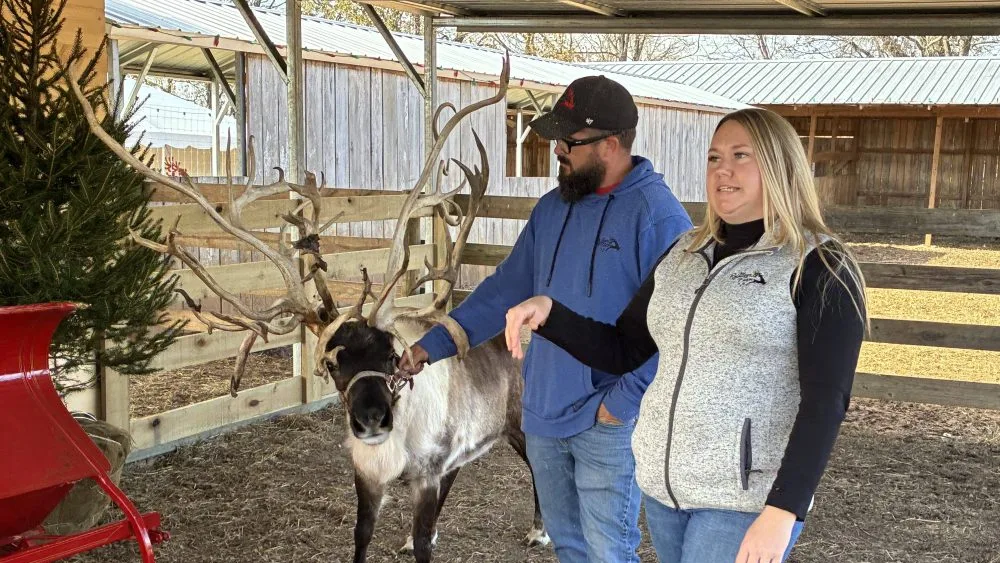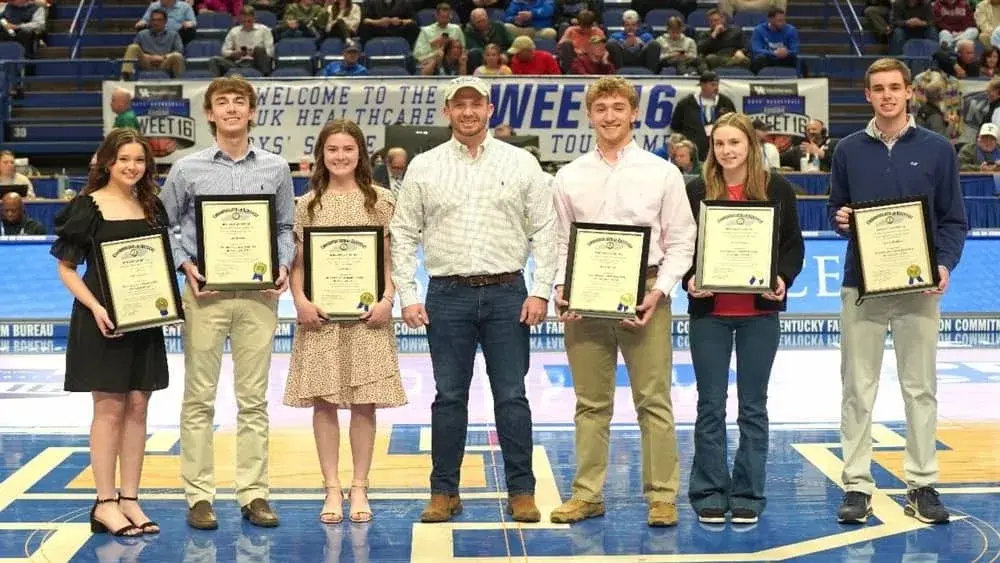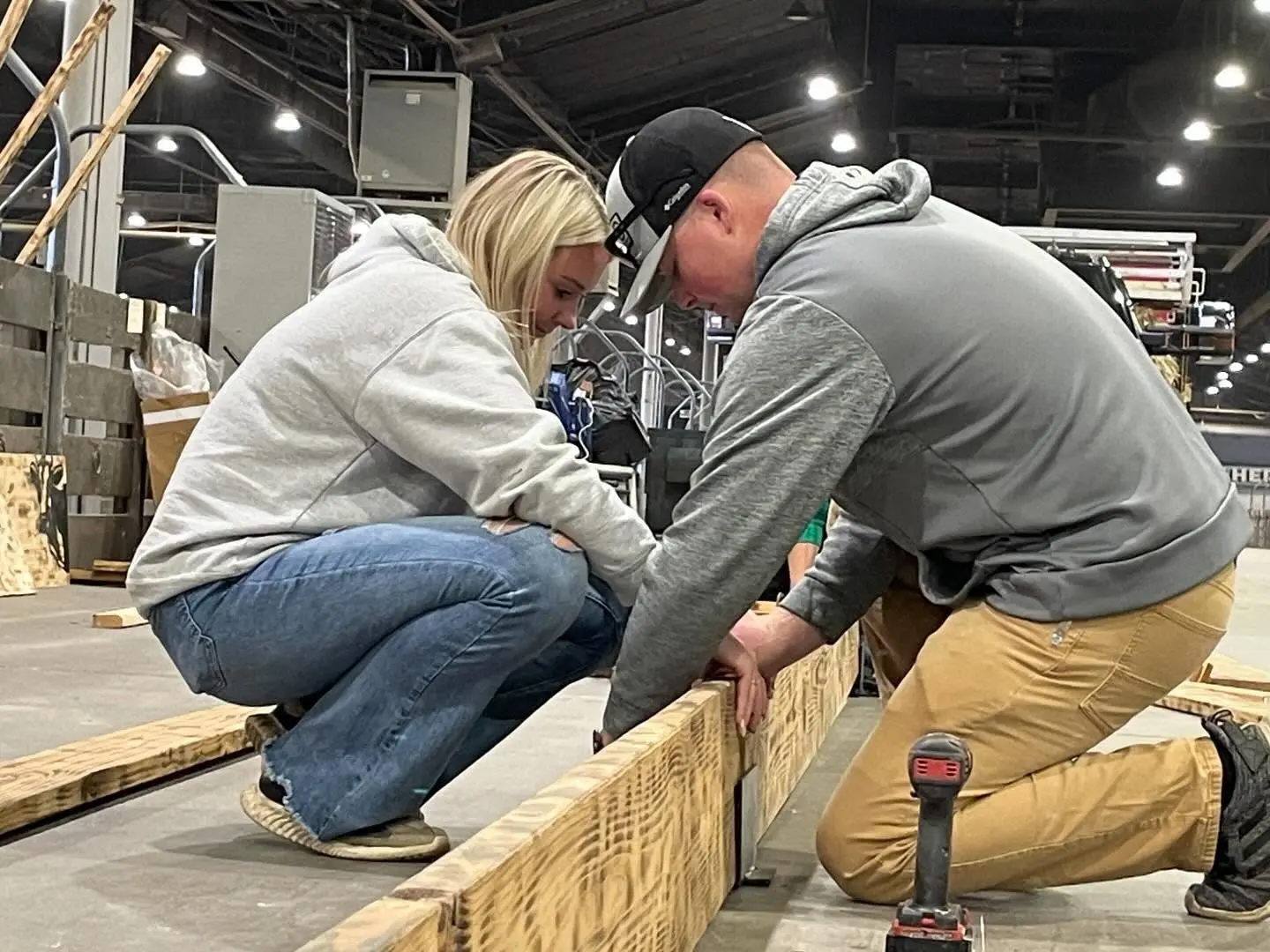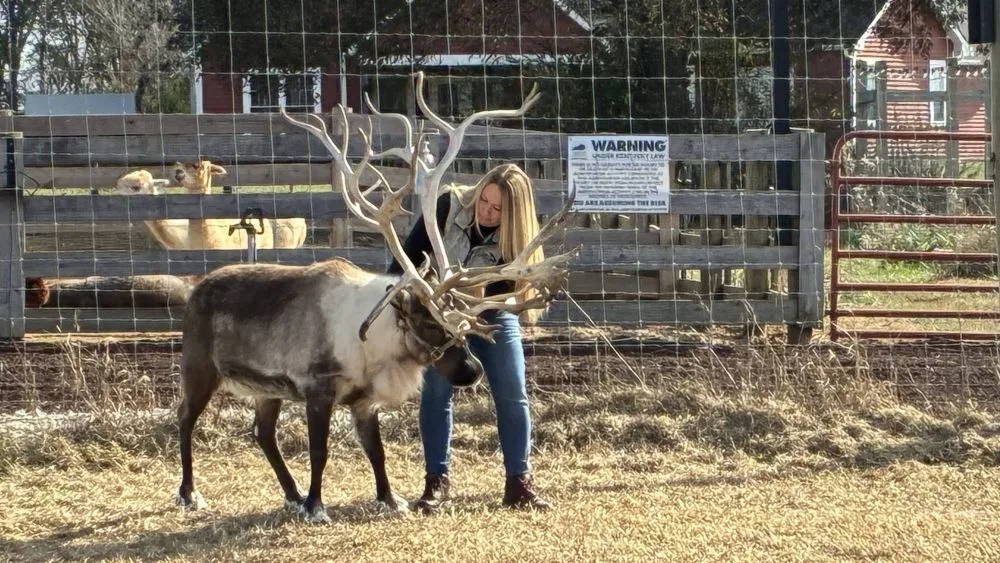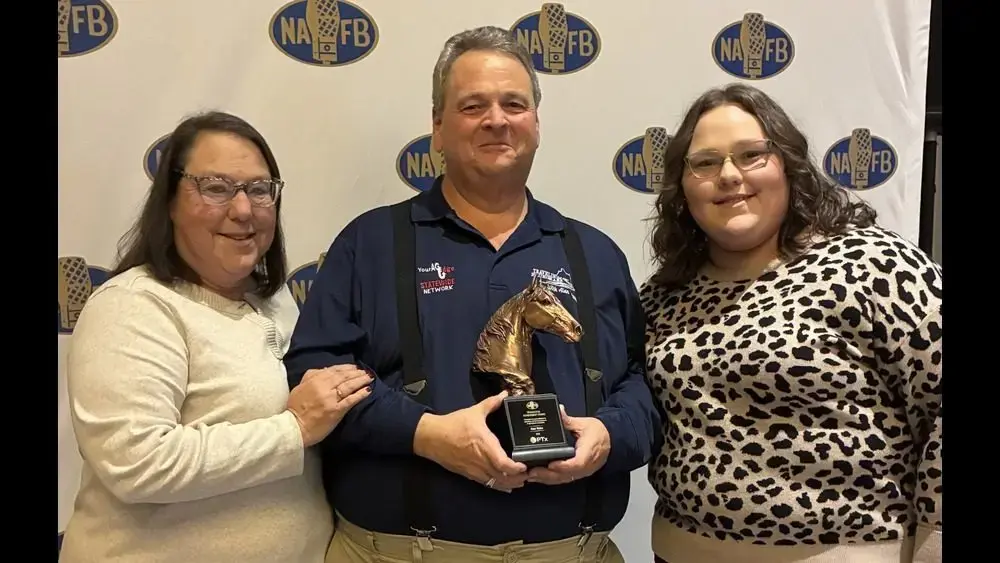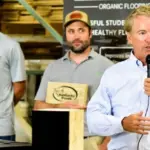
Just off of Highway 94 between Cadiz and Murray, near Elm Grove and Little Golden Pond, noted dignitaries gathered for a “woodcutting” Tuesday afternoon to officially christen a major expansion of Hempwood — a facility that, since 2019, has been capable of turning plant fibers into organic, sustainable and highly-desired board feet.
Using the Fibonacci Sequence, the Golden Ratio and an algorithm he crafted in college, proprietor Greg Wilson has turned a practice often used in the farming and production of bamboo wood into hemp cultivation and use.
All of the hemp used is locally- and regionally-grown, and starts with Murray State University’s introduction of the Center For Agricultural Hemp.
Former Dean of the Hutson School for Agriculture Dr. Tony Brannon was Tuesday’s master of ceremonies, and vividly remembers those first baby steps taken back in August 2012 — when farming hemp was a big no-no, but was about to become an oh-let’s-go.
He was at the Kentucky State Fair about to take in the famous Ham Breakfast. Senator Dr. Rand Paul arrived in a hemp shirt from Canada, and former Agriculture Commissioner James Comer was about to be ringing his phone nonstop — eventually leading to MSU breaking ground on the country’s first legal reintroduction of the crop.
By 2016, Brannon added that now Dean Dr. Brian Parr had returned to MSU — phones ringing off the hook to get involved at the ground level of hemp’s promise for a better tomorrow.
Wilson’s first call to Brannon came from China — where he was busy refining and implementing his process overseas. His next calls were to farmers in Calloway County, the Kentucky Department of Agriculture and the Bluegrass Agriculture Development Corporation.
And, of course, Wilson has made many calls to his federal delegation, including Paul — who arrived after visiting Paducah for the U.S. Department of Energy’s $1.5 billion commercial uranium enrichment facility announcement.
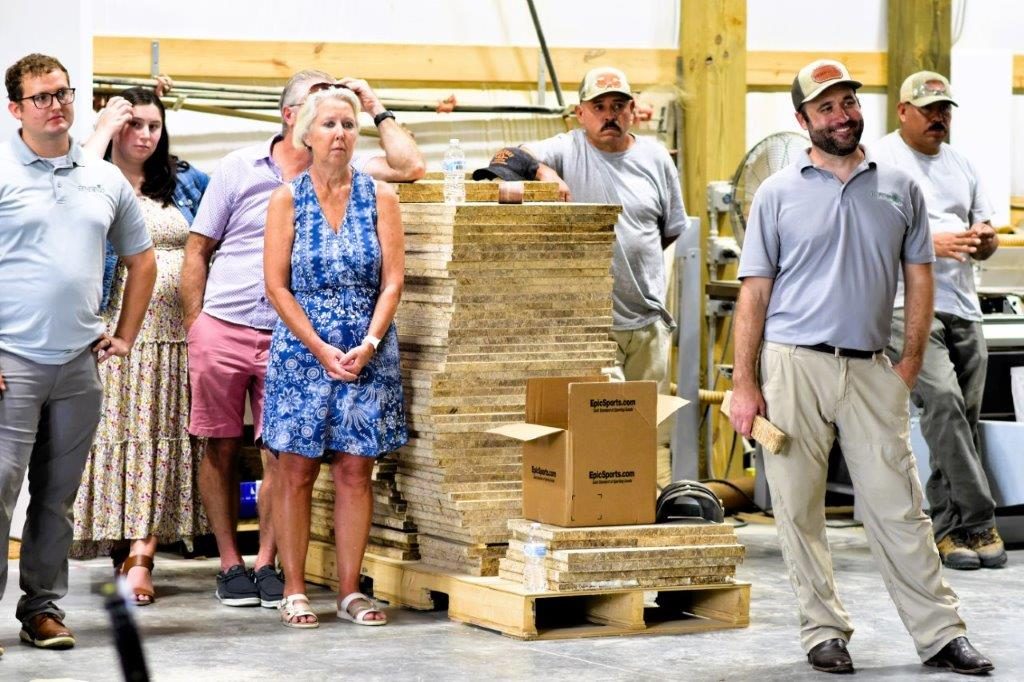
In fact, Paul finds himself in the middle of a federal measure he has reintroduced, called the Hemp Economic Mobilization Plan (HEMP) Act, which would raise the federal definition of legal hemp from 0.3% THC by dry weight to 1% and shift testing requirements from post-harvest flower to final products.
While some, including Senator Mitch McConnell, have lambasted the order, some supporters say it would ease burdens on farmers and better reflect product safety.
The move comes amid efforts in Congress to ban most consumable hemp products, but Paul said it also aims to reduce legal confusion during transport by expanding acceptable documentation for hemp shipments, helping prevent seizures by law enforcement who mistake hemp for marijuana.
Wilson noted his Calloway County company grew by more than 80% in the last fiscal year, successes rivaling corn, soybean and tobacco.
Hemp as a commodity is no stranger to American history. During WWII, Japan’s blockade cut U.S. access to Filipino hemp and Indian jute, which at the time threatened production of rope, parachute webbing and other essential military supplies.
A 1942 government film titled “Hemp for Victory” urged farmers to boost hemp acreage to 50,000 in 1943, teaching cultivation and harvesting techniques as an act of patriotism.
Considered a durable, non-psychoactive variety of Cannabis sativa, hemp yields up to four times more fiber per acre than forests, resists mildew and grows in varied soils with minimal pesticides.
It was criminalized in 1937 due to its relation to marijuana, but was temporarily legalized to support the war effort—one of several times U.S. military needs have overridden drug laws.
Now, growing it means business.
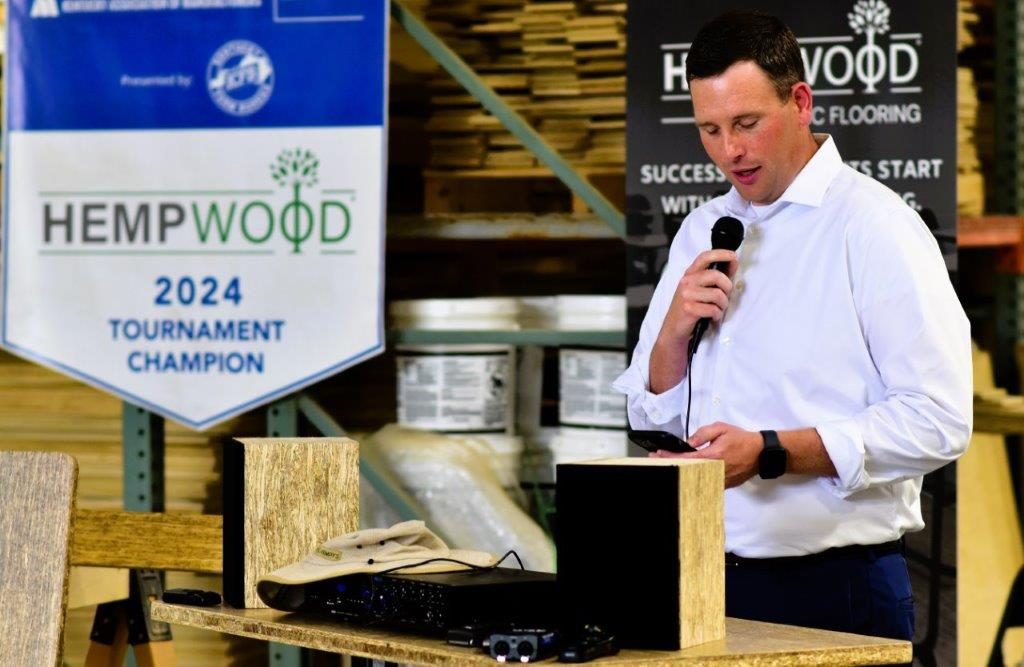

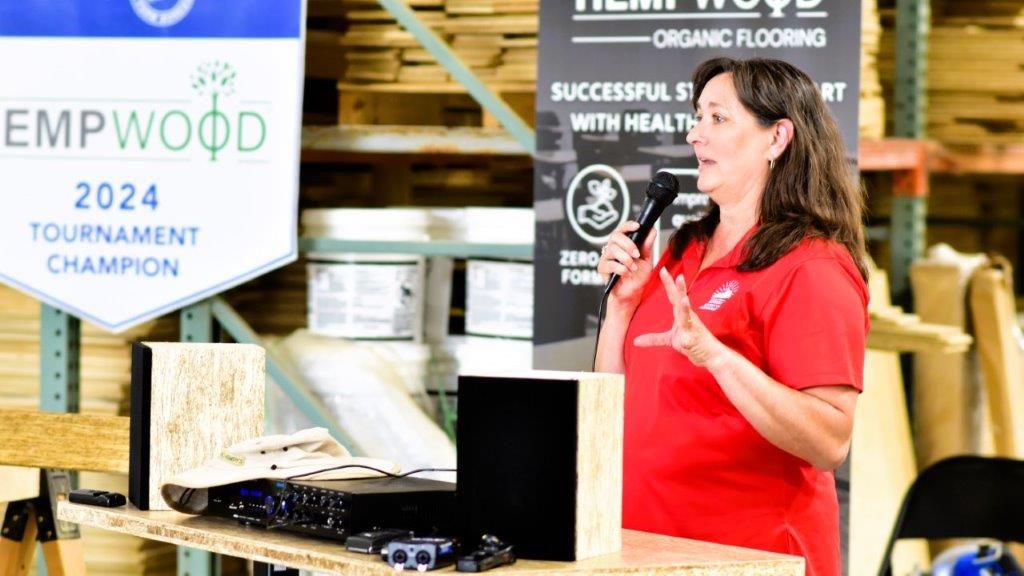
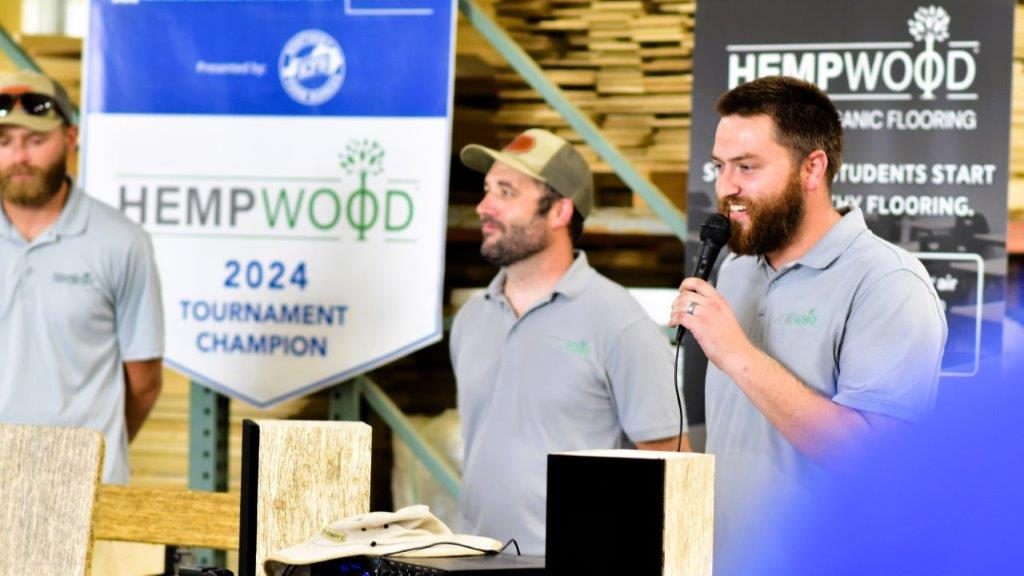
What is Hempwood?
Full Press Conference
Press Gaggle With Sen. Paul and Wilson
“Ribbon-Cutting”



